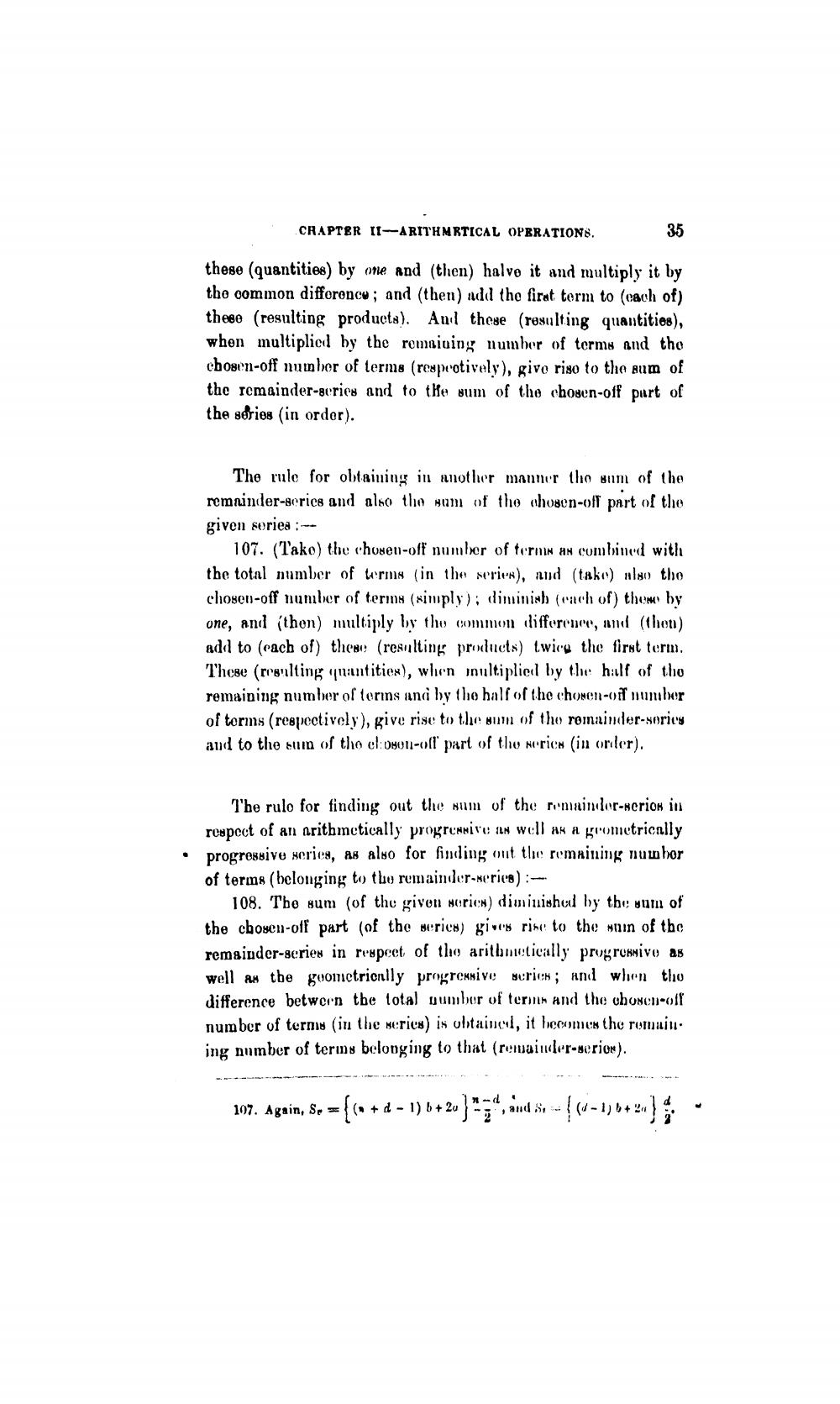________________
CHAPTER II --ARITHMETICAL OPERATIONS.
these (quantities) by one and (then) halve it and multiply it by the common difforonow; and (then) add the first term to (cach of) these (resulting products). Anil these resulting quantities), when multiplied by the remaining number of terms and tho chosen-off number of terme (reupeotively), give riso to the sum of the remainder-series and to the sum of the chosen-off part of the series (in order).
The rule for obtaining in another manner the sum of the remninder-acrice and also the sum of the chosen-off part of the given series :--
107. (Tako) the chosen-off number of terminas combined with the total number of terms in the series), and (tako) algo tho choseu-off number of terms (simply); diminish (cach of) thum by one, and (thon) multiply by the common differences, and (then) add to (cach of these resulting products) twice the first term. These (resulting quantities), when inultiplied by the half of tho remaining number of terins and by the half of the chosen-off number of torms (respectively), give rise to the sum of the romainder-sories and to the sum of the clowon-off' part of the orien (in onler).
The rulo for finding out the sum of the remainder-acrion in respect of an arithmetically progressive in well as a geometrically progressive series, as also for finding out the remaining nuubor of terms (belonging to the remainder-nerics) :
108. The sum of the given morics) diminished by the sum of the chosen-off part (of the series) gives rine to the moun of the remainder-serien in respect of the arithmetically progressive as well as the goomctrionlly progressive series; and when the difference between the total oumber of teronth and the obosco-off number of terms in the series) is obtained, it becomes the romain. ing number of terms belonging to that (remainder-serior).
197. Again, S = {(u + d = 1) 6+20) "z", ond S. -- {(- 1)0*24




